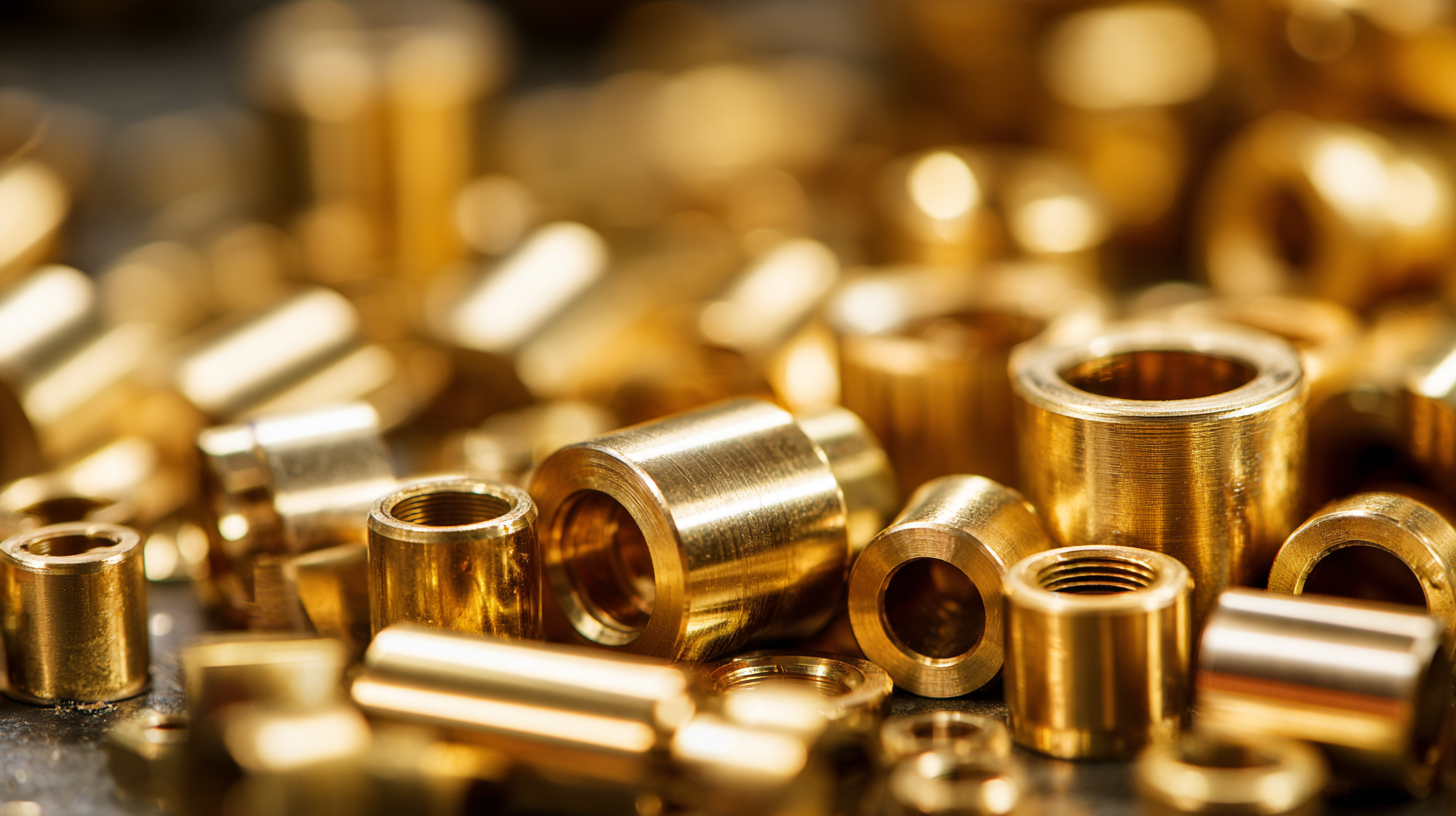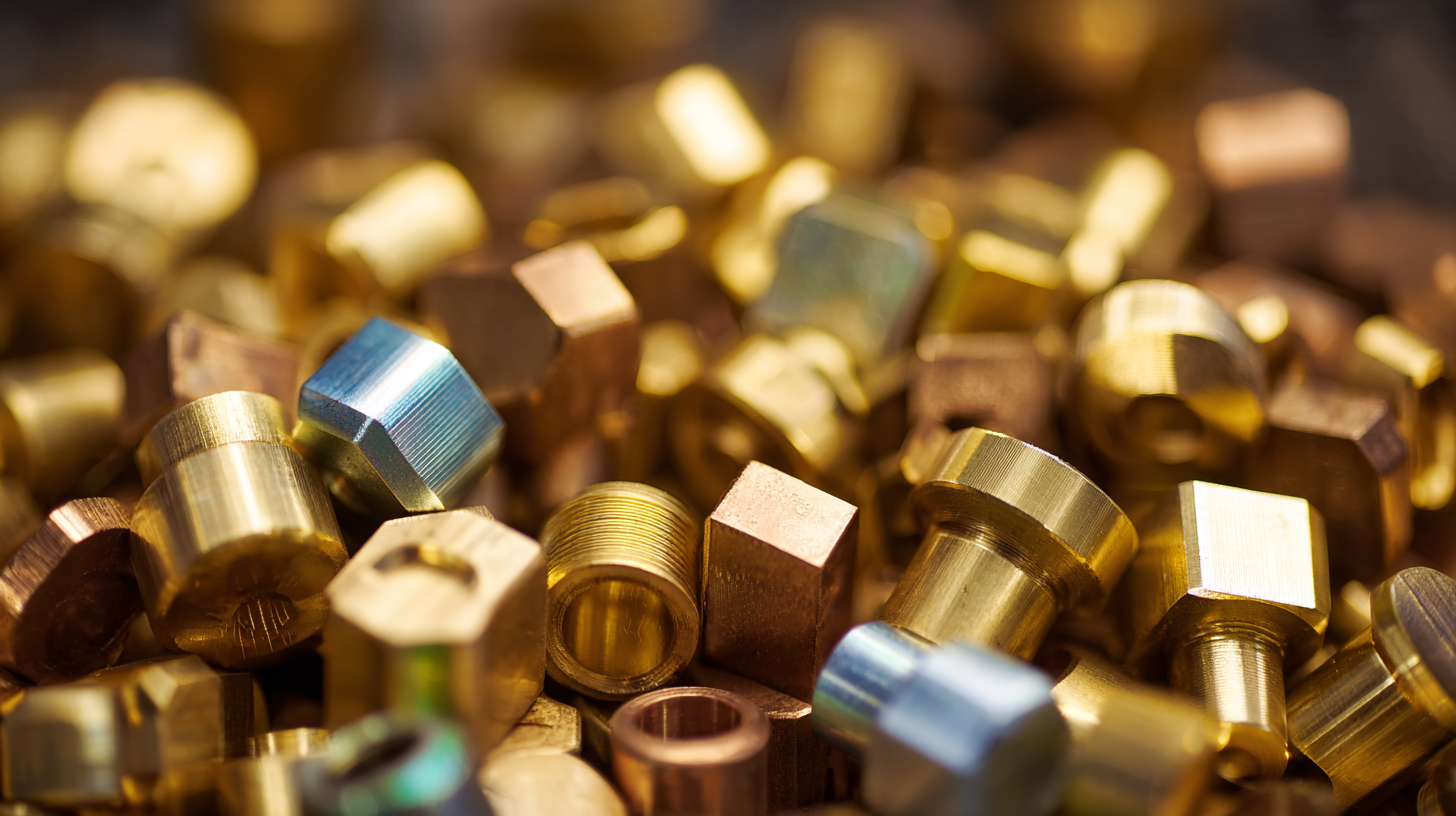How to Choose the Best Brass CNC Components for Your Manufacturing Needs: A Comprehensive Guide
 As industries continue to evolve, the demand for high-quality components remains paramount, particularly in sectors relying on brass CNC machining. According to a recent report by Grand View Research, the global CNC machining market is projected to reach $100 billion by 2025, driven by advancements in manufacturing technologies and increasing production needs. Brass, with its excellent machinability and corrosion resistance, emerges as a preferred material for various applications, including automotive and electronics. However, choosing the right brass CNC components can significantly impact operational efficiency and product quality. This comprehensive guide will navigate you through the selection process, ensuring that your manufacturing needs are met with precision and reliability in a rapidly advancing technological landscape.
As industries continue to evolve, the demand for high-quality components remains paramount, particularly in sectors relying on brass CNC machining. According to a recent report by Grand View Research, the global CNC machining market is projected to reach $100 billion by 2025, driven by advancements in manufacturing technologies and increasing production needs. Brass, with its excellent machinability and corrosion resistance, emerges as a preferred material for various applications, including automotive and electronics. However, choosing the right brass CNC components can significantly impact operational efficiency and product quality. This comprehensive guide will navigate you through the selection process, ensuring that your manufacturing needs are met with precision and reliability in a rapidly advancing technological landscape.
Understanding Brass CNC Components: Key Characteristics and Benefits
When selecting brass CNC components for manufacturing needs, it's crucial to understand their key characteristics and benefits. Brass is a popular choice due to its excellent machinability, corrosion resistance, and attractive appearance. The ability to withstand high temperatures makes brass an ideal material for components that require durability and reliability in various environments. Moreover, its low friction properties ensure smooth operation in moving parts, which is particularly beneficial for applications in the automotive and aerospace industries.
In addition to its mechanical properties, brass CNC components also offer significant advantages in terms of versatility. They can be easily customized to meet specific design requirements, allowing manufacturers to optimize their processes and improve product performance. Furthermore, with the advancements in CNC machining technologies, the precision and consistency of brass components have reached impressive levels, reducing waste and increasing efficiency. This makes brass an attractive option not only for traditional manufacturing processes but also for innovative approaches such as additive manufacturing, which combines subtractive techniques with material layering to create complex geometries.
Identifying Specific Manufacturing Needs for Optimal Brass Components
When selecting brass CNC components for your manufacturing needs, it's crucial to first identify your specific requirements. Understanding the mechanical properties of different brass alloys is essential. For instance, α-brass, which is derived from scrap copper and zinc, has distinct characteristics that can significantly affect the performance of your final products. This evaluation of mechanical and microstructural properties helps in determining the right type of brass that will best suit your manufacturing process and the operational environment of your components.

Moreover, consider the implications of project setup and costs. Recent reports on brass rod, bar, and sheet manufacturing provide valuable insights into the overheads involved in starting a project. These insights can guide you in budgeting effectively and understanding the machinery requirements needed for efficient manufacturing. By aligning your specific manufacturing needs with detailed knowledge about brass properties and manufacturing costs, you can make informed decisions that enhance your production quality and reduce waste.
Comparison of Brass Alloys: Choosing the Right Type for Your Project
When choosing the best brass alloys for your manufacturing needs, it's essential to understand the properties that differentiate each type. Common brass alloys, such as C26000 (also known as yellow brass) and C36000 (free-cutting brass), offer distinct advantages depending on your application. For example, C26000 boasts excellent corrosion resistance and is ideal for architectural fittings, while C36000 is renowned for its machinability and is often used in the production of precision components.
Data from industry reports indicate that over 70% of manufacturers prefer C27000 brass for its balance between strength and formability, making it suitable for both extrusions and stamping processes. In contrast, the more specialized alloys, like C44300, which is favored for plumbing applications due to its superior resistance to dezincification, are becoming increasingly popular as industries push for solutions that enhance longevity and reduce maintenance costs. By aligning your project requirements with the appropriate brass alloy, you can significantly enhance the durability and efficiency of your final product.
Comparison of Brass Alloys: Choosing the Right Type for Your Project
Critical Factors to Consider When Sourcing Brass CNC Parts
When sourcing brass CNC components for your manufacturing needs, there are several critical factors to consider. Firstly, the quality of the brass material itself is paramount. High-grade brass not only ensures durability and longevity but also affects the machined part's precision and overall performance. Look for suppliers who provide certifications about their material quality, ensuring compliance with industry standards. This diligence can save you time and money by reducing scrap rates and rework.

Another vital factor is the CNC machining capabilities of your supplier. Different manufacturers may employ varying technologies and processes that can impact the final product. Assess their range of capabilities, from tight tolerances to intricate designs, to ensure they can meet your specific needs. Additionally, consider their reputation and experience in the industry; established suppliers often have a proven track record of delivering quality products on time, which can be essential for maintaining your production schedules. Lastly, don't overlook customer service and support; a responsive supplier can assist you in navigating any challenges that may arise during the sourcing process, ensuring a smoother experience.
Tips for Evaluating Quality and Precision in Brass CNC Manufacturing
When selecting brass CNC components for your manufacturing needs, evaluating quality and precision should be your top priority. Brass, known for its excellent machinability and durability, is a preferred choice in various industries. However, not all brass CNC parts are created equal. It's essential to understand the nuances that affect both performance and longevity.
Tips for Evaluating Quality and Precision in Brass CNC Manufacturing: Start by assessing the material grade of the brass being used. High-quality brass alloys are critical as they significantly influence the strength and resistance of the components. Additionally, check the tolerances specified by the manufacturer. Precision in machining plays a crucial role in ensuring that the components fit perfectly into your projects. Look for manufacturers who provide detailed documentation of their machining processes and quality control measures.
Furthermore, consider the manufacturer's reputation in the market. Reviews and case studies from previous clients can provide insights into the consistency and reliability of their products. As global demand for high-quality metal parts increases, especially in areas like brass sheets manufacturing, choosing the right supplier can make a significant difference in your production efficiency and overall success.